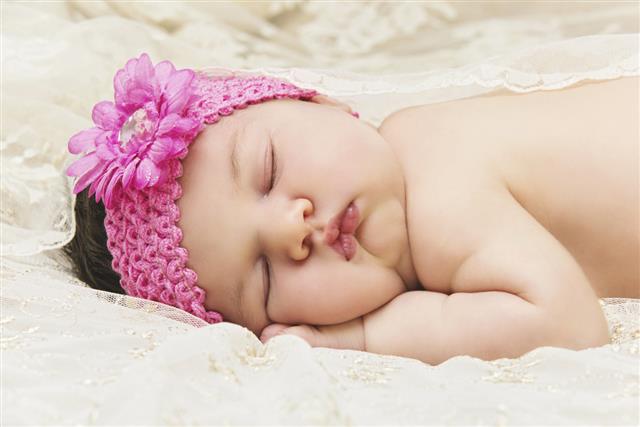
Headbands are extremely versatile as a hair accessory, that is a no-fuss addition that ups the adorable factor for any baby. Let’s take a look at how to choose a headband for your child, keeping certain pointers in mind before dolling her up.
Headbands were widely associated with babies and young children, but it has extended to adults too. From childish designs to grownup pieces, headbands have come a long way from their humble beginnings. Whether you need it to hold your hair back while you sleep, for a party, to apply makeup, or wash your face, you cannot deny how useful this simple hair accessory is. Moreover, a baby’s cherubic features are amplified when sporting an accessory or two, especially headbands. There are all kinds of this hair accessory available today, where you’ll understand more about them in the later sections of this AptParenting article.
Types of Headbands
Soft Headbands
These come in either a stiff material that is semi-hard in nature, or as elastic covered in soft fabric. They’re easier to wear, don’t ruin easily if it’s from a good-quality brand, and come in a variety of exciting colors and patterns. They also come in different widths and girths, where it is advisable to use skinny headbands for a baby, because of their small heads.
Hard Headbands
These are made using strong materials like plastic, with tiny teeth across the inner rim to hold long hair in place. For a baby, it is better to opt for a soft headband over hard, since the teeth of the latter kind can dig into a baby’s soft skin, causing irritation and discomfort. Thin hard headbands can also break easily depending on its sturdiness, where a toothless one is a better alternative to the former option. Even so, the ends of the headband that cover the back of the ears, can cause a little pain from the pressure because of its tight arch. Choose one with padded ends to avoid any uncomfortable sensations.
Appropriate Style for Babies
A headband should ideally hold girlish designs and patterns, avoiding semi-precious stones or anything that can weigh it down. This avoids mishaps like a baby swallowing dislodged parts of such a complex headband. Applying unnecessary weight on such a delicate head is also uncalled for. Choose a dainty pastel palette or perky colors of the rainbow, fitted with bows, large flowers, woven ribbons, sequin work, crocheted patterns, lace, feathers, floral print, or colorful bead work, as part of the overall design.
Consider the Following Points
Before buying one, consider the use of the headband. Babies usually sport these when they step out for a birthday party or when there’s a special occasion around the corner like Christmas or Thanksgiving. They can even wear these to daycare, but if during playtime another child or your own fiddles with it, you’re going to end up buying more. Choose an occasion that limits playtime and the chances of fidgeting.
Be sure that the make of headband is sturdy, safe, and comfortable for your child. Choosing a trusted brand will pay off in the long haul, since mishaps tend to happen with cheap makes and clumsily-designed options.







